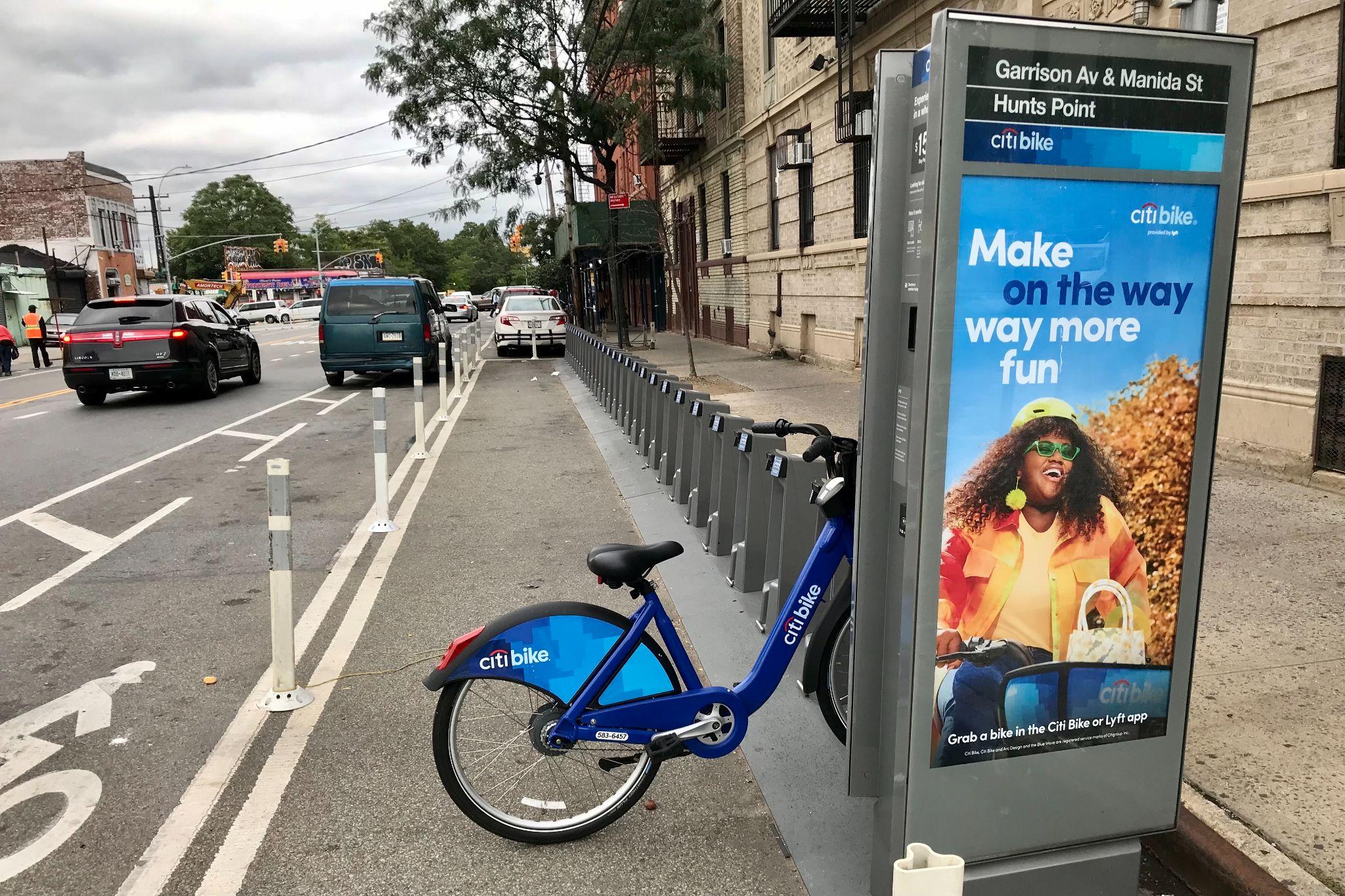Every day, Laura Alvarez commutes from her home in the South Bronx near 161st Street to her job at the city parks department near Columbus Circle. From May 2020 to June 2021, she rode a CitiBike. Now, she takes the train, and her commute is 5 or 10 minutes longer.
Alvarez misses the 30-minute bike ride, but she said it became hard to justify because of some problems with CitiBike’s service, especially the cost. With the onset of COVID-19, CitiBike gave first responders like Alvarez a free membership. When that free membership ended in June, she stopped using the bike-sharing service rather than pay the $179 annual membership fee.
“I love that it’s convenient, that you just pick it up here and leave it out there,” she said in a phone interview. “But a lot of times the stations next to my house, they were all empty. I had to walk three stations to get a bike.”
The city Department of Transportation led CitiBike’s expansion into the South Bronx in the spring of 2020. Today, the Bronx is home to more than 250 bike-sharing stations, according to transportation department data released in October. Since September 2020, more than 400,000 trips have started or ended in the Bronx.
The transportation department and Lyft, the ride-sharing company that owns CitiBike, plan to place hundreds more stations in the Bronx in the coming years.
Yet, some South Bronxites feel CitiBike’s expansion has harmed other forms of transportation, especially driving. Others, like Alvarez, are happy with CitiBike’s increased presence, but feel the service could be improved by making more bikes available.
Keith Kalb, the deputy borough commissioner for the transportation department in the Bronx, said CitiBike is achieving one of its main goals of making short trips easier for commuters.
“The system is meant to be the first- or last-mile connection to other transit,” Kalb said at an Oct. 13 meeting for Bronx Community Board 2, which covers Hunts Point and Longwood. “Most of the ridership is happening to and from the subway systems.”
CitiBike stations are often clustered around high-traffic roads to best serve subway stations. Docks are placed within a 3- to 5-minute walking distance of each other. Some locals, like Community Board Chair Roberto Crespo, argue that these high-traffic areas, like along Southern Boulevard, have too many stations. He said some of these bike racks use vital space on streets that should go to parking and should be placed on sidewalks.
At the Oct. 13 community board meeting, Community District Manager Ralph Acevedo said that CitiBike docks in his neighborhood have taken over 45 to 50 parking spaces. But Acevedo voiced his support for the program, saying, “We’re not against the CitiBike program as an alternative to driving. We’re against that they’re taking up too much of the street parking.”
Kalb replied that CitiBike docks are too big to cram onto many Bronx sidewalks and that the high saturation of stations is by design. “They are clustered closer to transit because that’s where most folks are going,” Kalb said. “If the stations are too far apart, then people are not going to return their bikes.”
Kalb said taking up some street parking is a small sacrifice for getting more residents into eco-friendly transport like bike-sharing. Yet, a recently updated study published in an urban planning journal called Cities showed that bike-sharing reduced CO2 emissions in New York City by less than 1%.
South Bronx resident Isaias Vega, who works for the Third Avenue Business Improvement District, said the main draw to CitiBike is convenience and saving time. Vega, speaking in a phone interview, said that biking to work takes half as much time as riding the bus. He added that many of the bikes need more maintenance, but he is excited that New Yorkers have the opportunity to bike around their city.
Like Laura Alvarez, Vega also pointed out that too many stations in key areas are always empty, while other stations go completely unused.
A spokesperson for Lyft acknowledged via email that an outflow of bikes from the Bronx to Manhattan or Queens may have caused a temporary shortage of bikes in the area. However, the representative said that Lyft added more than 400 bikes to Bronx stations in October to fix that problem. Now, Bronx residents are able to pick up bikes at least 98% of the time, according to Lyft’s data.
The spokesperson added that the company’s maintenance team is required to repair any issues on individual bikes within 48 hours of learning about the problem.
Alvarez continued to assert that many of the Bronx’s stations are still empty, sending photos of long lines of abandoned bike docks. She said she’d get a membership if it was half the current price. Since walking past empty stations to find a bike takes so long, she’s lost much of the benefit of riding CitiBike.
“I don’t think it’s worth it right now to pay that money. At the end of the day, it’s not even saving me time,” she said.

